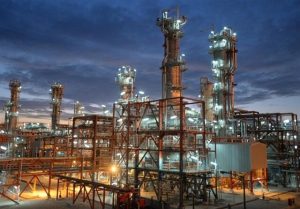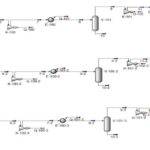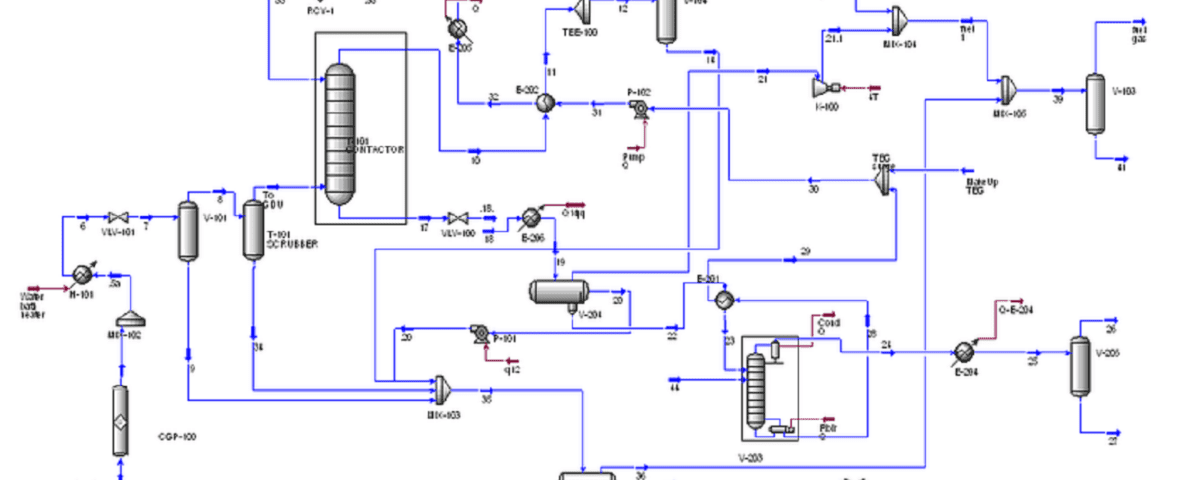Description
Gas processing Refinery are established to purify and convert gaseous hydrocarbons into various products. Gases produced in gas fields (rich or lean) and associated gases from oil fields contain a variety of components, ranging from light to heavy hydrocarbons, as well as gases from other families such as H2S, CO2, and COS, which contribute to gas acidity.
Depending on the richness or dryness of the produced gas in the reservoir and the level of toxic compounds, various processes are designed and constructed in gas processing plants to produce final products. To recover various gas cuts from associated gases produced in oil fields, NGL facilities are used. After separating liquid components (natural gas liquids and liquefied petroleum gas), the light gas is returned for injection into related fields or is sometimes delivered to the National Gas Transmission Company for distribution in the national gas transmission network.
A significant portion of the country’s NGL units are located in the southern region (National Iranian South Oil Company and the Iranian Offshore Oil Company).The liquid cuts produced in these facilities are also delivered to petrochemical feedstock plants, such as BANDAR IMAM Pet. Co. Complex in the Special Economic Zone of MAHSHAHR Pet. Co.

Complete Simulation of a Gas Processing Plant
This project presents a comprehensive simulation of a gas processing plant using Aspen HYSYS software. The Gas processing Refinery consists of the following units:
1.Gas Sweetening
is a process used in the chemical industry to clean up natural gas. It removes harmful gases like hydrogen sulfide (H₂S) and carbon dioxide (CO₂) from the gas. This is done by using a special solution made of water and amines.
-
- Diethanolamine (DEA)
- Monoethanolamine (MEA)
- Methyldiethanolamine (MDEA)
- Diisopropanolamine (DIPA)
Diglycolamine (DGA) In this project, the sweetening unit using DEA has been simulated with Aspen HYSYS.
2.Dehydration
is an essential part of natural gas processing. Even after separating oil from gas, some water vapor remains trapped within the natural gas. While simple methods can remove most of this water near the wellhead, the remaining water vapor needs a more complex process called dehydration. In dehydration, a desiccant (a substance that absorbs water) is used to capture and remove the water vapor from the natural gas.
3. Natural Gas Compression
Three primary types of equipment are employed to elevate gas pressure:
- Positive Displacement: Examples include reciprocating compressors, screw compressors, and sliding vane compressors.
- Dynamic: Such as blowers, centrifugal compressors, and axial compressors.
- Jet: Including educators and ejectors.
4. Natural Gas Recovery
The objective of this unit is to separate methane (CH₄) and ethane (C₂H₆) from the raw gas ,The feed gas enters this unit at a pressure of 62 bar and a temperature of 27.6°C. The unit’s products include sweetened methane gas and ethane.
To adjust the gas fluid dew point, a cooling process is carried out using a cold box.This cold box consists of several parallel channels through which gaseous and liquid phases flow for optimal heat exchange.
In this unit, methane is separated from other fluids in a de-methanizer column at an extremely low temperature of approximately -94°C and a pressure of 30 bar. The remaining fluids, designated as C2+, are pumped from the bottom of the column to the de-ethanizer column for ethane separation from C3+ , The methane gas, due to its low temperature, passes through several heat exchangers, increasing its temperature and The gaseous fluid is then compressed approximately three times (to a total of 33 bar) using a compressor and sent to the gas export unit.
Gas Refinery Simulation with Aspen HYSYS
This project presents a comprehensive simulation of a gas processing plant, encompassing key units such as gas sweetening, dehydration, compression, and recovery. By utilizing Aspen HYSYS software, the project provides valuable insights into the design and operation of gas processing facilities. The simulation results can be used to optimize plant performance, improve efficiency, and minimize environmental impact.


